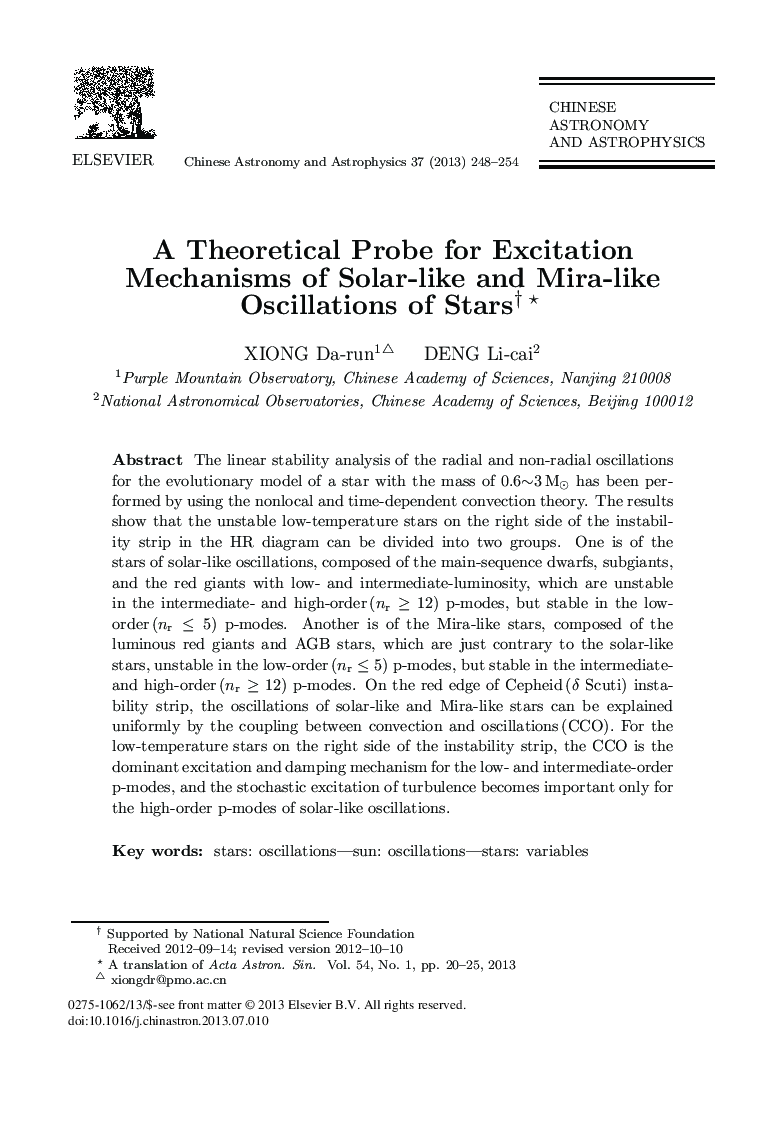| Article ID | Journal | Published Year | Pages | File Type |
|---|---|---|---|---|
| 1772055 | Chinese Astronomy and Astrophysics | 2013 | 7 Pages |
The linear stability analysis of the radial and non-radial oscillations for the evolutionary model of a star with the mass of 0.6∼3 M8 has been per- formed by using the nonlocal and time-dependent convection theory. The results show that the unstable low-temperature stars on the right side of the instabil- ity strip in the HR diagram can be divided into two groups. One is of the stars of solar-like oscillations, composed of the main-sequence dwarfs, subgiants, and the red giants with low- and intermediate-luminosity, which are unstable in the intermediate- and high-order (nr ≥ 12) p-modes, but stable in the low- order (nr ≤ 5) p-modes. Another is of the Mira-like stars, composed of the luminous red giants and AGB stars, which are just contrary to the solar-like stars, unstable in the low-order (nr ≤ 5) p-modes, but stable in the intermediate- and high-order (nr ≥ 12) p-modes. On the red edge of Cepheid (δ Scuti) insta- bility strip, the oscillations of solar-like and Mira-like stars can be explained uniformly by the coupling between convection and oscillations (CCO). For the low-temperature stars on the right side of the instability strip, the CCO is the dominant excitation and damping mechanism for the low- and intermediate-order p-modes, and the stochastic excitation of turbulence becomes important only for the high-order p-modes of solar-like oscillations.
